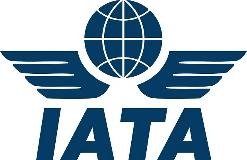The International Air Transport Association (IATA) revised its 2013 global industry outlook downwards to US$11.7 billion on revenues of US$708 billion. Airline performance continued to improve in the second quarter; however at a slower pace than was expected with the previous projection (in June) of US$12.7 billion. This reflects the impact on demand of the oil price spike associated with the Syrian crisis and disappointing growth in several key emerging markets.
Performance in 2013 is considerably better than the US$7.4 billion net profit of 2012. The upward trend should continue into 2014 when airlines are expected to return a net profit of US$16.4 billion. This would make 2014 the second strongest year this century after the record breaking US$19.2 billion profit in2010.
“Overall, the story is largely positive. Profitability continues on an improving trajectory. But we have run into a few speed bumps. Cargo growth has not materialized. Emerging markets have slowed. And the oil price spike has had a dampening effect. We do see a more optimistic end to the year. And 2014 is shaping up to see profit more than double compared to 2012,” said Tony Tyler, Director General and CEO, IATA.
Airline performance remains strong. This year, airlines are expected to post the same operating margin (3.2 per cent) as in 2006, even with a 54 per cent hike in jet fuel prices. The industry has been able to absorb this enormous cost increase as a result of changes in the industry structure (through consolidation and joint ventures), increased ancillary sales and reduced new entry due to tight financial markets. Moreover, the industry is expected to have a relatively good year even with global economic growth at 2.0 per cent. Previously 2.0 per centgross domestic product (GDP) growth was considered the point below which airlines posted losses.
Major Forecast Drivers for 2013
Economic Growth: Airline profits generally follow broad economic trends. Business confidence bottomed out at the end of 2012 and we have been expecting an acceleration of economic activity to follow. That has not yet materialized. GDP growth in 2013 is now expected to be 2.0 per cent which is slightly below the 2.2 per cent recorded in 2012. Within that overall trend, we have seen an acceleration of improvements in developed markets (particularly the US) and a deceleration of growth in some key emerging markets (India, Brazil and to some extent China).
Oil Price: Oil prices are expected to average at US$109/barrel (Brent) for the year. While this is US$1.0 higher than previously expected, jet fuel prices have softened slightly. We now expect jet fuel prices to average US$126.4/barrel (US$1.0 less than expected). The net impact on the overall fuel bill (which is expected to total US$213 billion and account for 31 per cent of total costs) is expected to be neutral. The impact of the Syrian crisis and higher oil prices has been felt more through a dampening of demand.
Passenger: Passenger growth remains robust at 5.0 per cent, although slightly below the 5.3 per cent previously projected and below the 5.3 per cent growth recorded in 2012. Passenger numbers are expected to grow to 3.12 billion—the first time that they have topped the 3 billion mark. Yields are expected to be flat for the year (below the 0.3 per cent growth previously projected). It should however be noted that load factors are at record highs (80.2 per cent) and yields in the US are above pre-recession levels.
The outlook for Asia-Pacific airlines is downgraded by US$1.5 billion to US$3.1 billion profits largely driven by slower growth among the region’s emerging economies. Asia-Pacific carriers are the largest players in global cargo markets and the most impacted by its flat performance. This has been somewhat offset by a strengthening domestic market in China. Japanese carriers are also seeing a boost as a result of monetary expansion, more favorable exchange rates and the impacts of industry restructuring. We expect robust passenger demand growth of 6.6 per cent to be outstripped by a 6.9 per cent increase in capacity.
Airlines are expected to see a significant boost in 2014 with profits of $16.4 billion on revenues totaling US$743 billion. Rising business and consumer confidence levels should indicate an uptick in the global business cycle (2.7 per cent GDP growth is expected) which has a direct impact on airline profitability. Oil prices are expected to fall to US$105/barrel (Brent, from US$109 expected this year) on the back of reduced geo-political tensions and an improved US energy outlook. A fall to below US$100 would be expected from normal market forces. But the OPEC cartel is preventing the full realisation of the benefits of better supply prospects. Furthermore, the benefits of improving market structures on several regions are expected to continue to drive performance and consumer benefits.
Even with the significant improvements expected for 2014, an industry profit of $16.4 billion implies a return on invested capital of just 5.2 per cent. That remains significantly below the industry’s weighted average cost of capital which is hovering between 7 per cent and 8 per cent.
“Airlines are demonstrating that they can be profitable in adverse business conditions. Efficiencies are being generated through myriad actions—consolidation, joint ventures, operational improvements, new market development, product innovations and much more. When market forces drive action, we get results that both strengthen the industry and benefit the consumer. Quite simply, stronger airlines can invest more in improving connectivity and service innovations. If more policy makers incorporated that into the cost-benefit analysis when developing regulations, we would have a much healthier industry generating even broader economic benefits,” said Tyler.
The balance between profit and loss remains delicate despite the forecast improvement for 2014. “A US$16.4 billion profit for transporting some 3.3 billion passengers means that airlines will retain an average of about US$5.00 per passenger. That very simple calculation demonstrates that even a small change in the operating environment—a new tax or other cost increase for example—could change the outlook quite significantly,” said Tyler.






